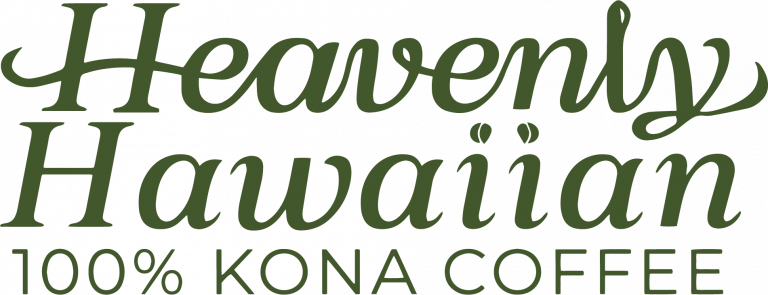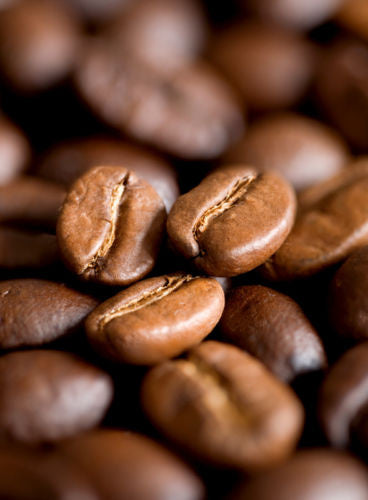Field days start at 8:00 a.m. sharp. The rule is well known: be there or be square, because you're not around to see what the day's work will be. However, on March 25 the Work-Stay crew rolled up to the barn by 8:20 a.m. thanks to some unexpected delays the morning had brought. Not ideal, but a longer day in the field will always make up for that lost time. Squeaks and moans meant the Ford Explorer was somewhere close. The navy blue behemoth pulled up and five young adults jumped out, eager to start the day. Leather work gloves, lunch pails, and floppy hats accompanied the items brought with them from Basecamp to the trees. For the record, it was filling the lunch pails that caused such a delay that morning.
Little did they all know that even after figuring out their lunches in the morning, they still had yet to grab all their necessities. Rain gear became essential after the grey clouds overhead proved their worth early in the morning. Soggy, late but still eager, each member of the group gathered around Ray, our Farm Manager, to learn how to properly execute the Beaumont - Fukunaga Vertical Pruning System.

Ray Taggart, Farm Manager.
I asked Ray to explain a bit more about this new pruning method to me. A quick, ten minute interview chalked it all up. He was quite generous with his information, so I figured I should share all I have learned from Mr. Taggart about it.
Saddle up, it's quite a ride.
The Beaumont - Fukunaga Vertical Pruning Method was developed in the early 1950's at the University of Hawai'i, Manoa. Two agricultural scientists were researching more efficient and effective ways of pruning coffee trees. Their intention was not only to help encourage new and fuller growth for the coffee trees, but also to aid with the amount of labor needed to take care of the crop. Hard, quality workers had become difficult to find; coffee trees require intense work and depth of knowledge is needed to properly care for them. With there still being over one thousand coffee farms located in Kona, Hawaii, alone, this research had the potential to be ground-breaking if these scientists did it right. As it turns out, they did.
For generations, the Traditional Kona Style Pruning Method has passed through the hands of families on Kona's coast. It defines true, hard and honest work, yet some say it is unnecessarily intensive in many ways. Topping the charts: the issue of needing to stop and observe each and every single tree in the plot annually, by a specially trained laborer or farmer to make the proper pruning selection.
Their skilled eyes would choose the new 'sucker' or 'shoot' that would be allowed to grow for the next four years on that particular tree. Understanding how to visualize possible issues specific tree branches might face as they grow, means comprehending which ones are going to be susceptible to breaking, disease and their availability to sunlight. The goal of the Traditional Kona Style Pruning Method was to remove one quarter of these 'faulty' sprouts from each tree to make room for new growth. Visiting each tree, every year to produce this end result was something that proved to be time consuming and particularly laborious.

A young coffee tree exhibiting new, green shoots, or 'suckers. These are some parts of the plant that get removed during pruning and suckering. The bigger pieces that get removed need to be done with a saw, or by hand during pruning; the result is pictured.
The Beaumont - Fukunaga Vertical Pruning System was directly based on this opportunity for efficiency. Instead of needing to remove one quarter of each tree during pruning season, the Beaumont - Fukunaga method carries the same percentage of removal in the field and shifts it to the entire farm.
This means one quarter of the field accounts for all the pruning: trees are to be stripped of all growth entirely, excepting one new shoot. Essentially resetting the entire tree and enabling it grow from new again. Leaving the rest of the trees to grow until the next year, when a new quarter will be chopped and allowing the trees that have been pruned, to focus only on growing shoots for the first year. Data has proven this method to produce tree shoots thicker, healthier and quicker. After three years, the maturity level of the coffee tree has more or less, peaked. Thus, further allowing them to focus only on growing as much coffee cherry as they possibly can. At four years, those new shoots will be producing massive amounts of coffee cherry.
Ray's example is this: It's like trying to read four books at once, or trying to read four books, one at a time.
For many, it would be easier to do the same thing over and over again, rather than trying to do many things at once. Especially when those different things require separate skill sets, equipment, and so forth.

A coffee tree in one of Heavenly Hawaiian's sectioned plots, several months after exercising the Beaumont - Fukunaga Pruning Method. Coffee is a hearty plant that has little to no issue growing back from the full prune. Most plants and trees will only be able to grow back with one third of the plant being removed. Adaptation is easy for coffee trees. It is a unique plant that has adapted incredibly well to the environment here in Hawaii.
Properly executed, this new method has shown a drastic reduction on the impact of labor by seventy-five percent in comparison to the Traditional Kona Style method of pruning. This is because a farmer, or laborer, would only need to visit a quarter of the trees in the plot, rather than every single tree during pruning season. Not only did the Beaumont - Fukunaga Pruning Method prove to be less time consuming, it also allowed the availability for anybody to follow it, rather than just trained professionals.

Originally, the Beaumont - Fukunaga Method was called 'stumping' because they would usually cut everything off of the tree, down to the stump. Over time, data found that around 5% - 10% of coffee trees would die off, requiring a new tree to be planted. Some farmers say that number can be less than 1% if they are fertilized and properly cared for. Now, to combat the death toll for coffee trees, we leave a 'nurse vertical' to ensure they can stay alive, healthy and continue to photosynthesize to produce more shoots.
Labor reduction was, and still is, especially necessary in Hawaii because the turnover rate for hiring individuals is usually quite high. Many folks are not able to stay long-term as laborers, so reducing the amount of labor has helped almost everybody, especially the small farms. Cutting necessary labor means being able to spend more time fertilizing, spraying and maintaining the field.
Coincidentally, mowing, weed-whacking and fertilizing coffee trees in these blocks are now easier. Spraying is generally unnecessary in these areas, which helps cut some costs too. For example, BotaniGard is the most expensive element used in our spray. It takes care of the coffee berry borer, so it is absolutely necessary, however when using this new method, less is needed. Therefore, the price of it can be reduced by a quarter. Pickers have a certain quarter of the farm less to pick, while the farm itself continues to make the expected amount of coffee cherry throughout the rest of the trees, so farmers aren't really losing cherry.
As more folks began adopting this new method, many ways of achieving twenty-five percent reduction were found. Many small farms would prune every fourth tree, some people would go every fourth row. Here at Heavenly Hawaiian, our acreages are broken up into sections or blocks. For each section, Ray then specifically selects a quarter of the trees which creates our twenty-five percent.
Time has passed and the trees have grown exponentially - moving the farmers to top the trees. This prevents adding new growth, focusing the tree solely on producing coffee cherry. Data speaks for itself when it shows a ten to twenty-five percent increase in coffee cherry using the Beaumont - Fukunaga Method properly, in comparison to the Traditional Kona Style.

Green coffee cherries found on a healthy coffee tree among those pruned and suckered for the season at Heavenly Hawaiian Farms.
There are still plenty of farmers in Kona who have not adopted this method. Usually these folks are smaller farm owners who are not interested in switching ways, and understandably so. Sticking to what they know and what has proven to work for generations is hard to argue against; making the switch for the pruning season can also be a gamble for many. The first couple years after switching to the Beaumont - Fukunaga Method from the Traditional Kona Style will show a drop in production for those trees. After those two years, the coffee cherry will increase exponentially, thus resulting in the benefit of the Fukunaga method. However, some farmers are unable to do without the production for those couple years.
In many other countries, they have adopted this new method and added 'hedging and topping' the trees with large pieces of machinery. Giant sawblades on things that look like lawnmowers cut and trim the trees as they drive between the rows of hundreds to thousands of acres of coffee trees. This is something we do not do at Heavenly Hawaiian Coffee Farms. It would result in difficult hand picking, and incredibly bushy coffee trees. These same farms that use the hedging and topping methods are using machines to shake their coffee cherry off the trees, which we also do not do at Heavenly. It makes sense for us to use the new method of pruning without machinery. We are still a family owned business that focuses on hand-picking our coffee, staying viable and successful.
In short:
Annually, more and more farms, usually the larger ones, are changing to the Beaumont - Fukunaga method of pruning. The Traditional Kona Style pruning method is being held by many smaller farms dotted along the coast.
Kona style is taking off one branch, the most mature one, from every tree - think freshman to senior year. Twenty-five percent of each coffee tree is removed.
The Beaumont - Fukunaga method is very similar, by using the same twenty-five percent removal process and amount of verticals (shoots). The removal can be found as a quarter of the entire field, rather than each tree.
Both of them still require the need for suckering, which is removing the new, green shoots that will eventually turn into a hearty, brown shoot.


Pruning and suckering a small section of the farm on the morning of March 25. The photo above shows Work-Stayers, Amy and Savanna. The photo below shows the completed section, with fallen branches that have been pruned off.
After soaking up as much information as was necessary to get going on the project, our crew got to work! There's a lot to know about this pruning method and it's all hard work. The good news is, working in the field is better with friends. While keeping our own space, couples paired up to work at the beginning of the rows of the block together and started to make headway north.

Work-Stayer, Brayden, paired up with Heavenly's Work-Stay Manager, Alison, to tackle some rows together.
Prune these branches. Chop that one. Snap the dead shoots off, those are the easy ones. The pop is nice and satisfying to hear when they break.

Radiant, Sir Owen on his way to begin working on the next tree in his row.
The goal was to finish this part of F1 block for the year. It was the last part that needed to be completed before heading over to The Other Farm where founders of Heavenly Hawaiian, Dave and Trudy Bateman live. It was a lesson in how not to spend too much time on each tree, because there are a lot of them. Heavenly has over sixteen thousand coffee trees alone and each of them need a little TLC (tender loving care).With a quick trim, the coffee trees could practically be heard breathing a sigh of relief, as they use their new room to grow baby shoots.



Above: Work-Stayer, Savanna, exhibiting wonderful form while pruning one of Heavenly's coffee trees. Middle: Alison and Brayden receive a brief explanation on what branches to look out for. Below: Miss Haley, our Head Barista and Manager of Konalani, pruning, suckering and cheesin' in the field.
The day went by fairly quickly in the trees. After about an hour or two, the plastic rain gear became more of a mobile sauna than protection. So the crew shed them as quickly as the rain showed up. The clouds helped keep the heat of the sun off our faces and backs, which made for easier work.


Above, from left to right: Savanna, Amy, Owen, Haley, Sersch. Below: Mishka himself, supervising the day's endeavors.
The entire crew for the day was made up of:
Alison, Savanna, Haley, Amy, Brayden, James, Ray, Owen, Alex, Gerald, Sersch, and Mishka Boy.
While Mishka didn't really do a lot of suckering, the crew said it was still nice to have him around. Ray however, said Mishka would have to work double-time in order to make up for the pruning cost. Regardless, the job spent up the majority of the day.

Gerald, working hard pruning and suckering in the field.
Around one o'clock the crew broke for lunch. The lunch pails came in handy then, rather than a hindrance. Which was a nice comparison against the morning. When the gears got back turning, the day's work was just about coming to a close. Music echoed across the mountain side, accompanied by the inconsistent snapping and hacking as the coffee shoots were broken.
At 4:00 p.m. the last cut marked the official end time for the day. Next was cleaning up the tools and gathering all the layers that had been sloughed off by the crew as they went through the trees. That meant they all headed home at about 4:20 p.m. Just enough time to make up for the minutes lost in the morning. The first day of understanding and executing the method of pruning and suckering at Heavenly Hawaiian Coffee Farms (with this specific crew) had come to a successful end.
It was only the beginning of this season's endeavors. The next day would bring an entirely different adventure.Work on The Other Farm, at Dave's place. Where the trees hadn't been pruned or suckered for years.
Thank you so much for going through this journey with us.
Please, stay tuned for the next chapter in The Heavenly Chronicles.
-A Hui Ho-








Leave a comment